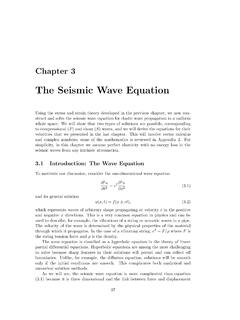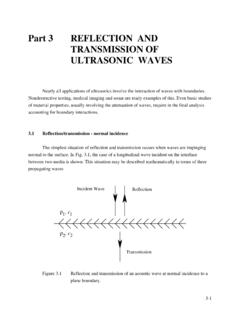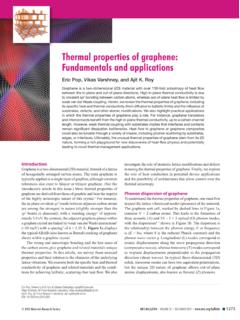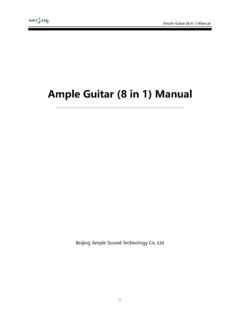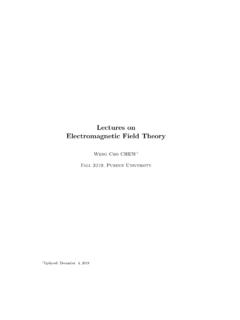Transcription of DAMPING PROPERTIES OF MATERIALS - Vibrationdata
1 DAMPING PROPERTIES OF MATERIALS . Revision D. By Tom Irvine Email: July 2, 2010. _____. The purpose of this tutorial is to give typical DAMPING values for various MATERIALS and systems. The data in Tables 1 and 2 is taken from Reference 1. Table 1. Static PROPERTIES of MATERIALS under Standard Conditions (approx. 20 C). Elastic Shear Density Poisson's Material 3 Modulus Modulus (kg/m ) 2 2 Ratio (N/m ) (N/m ). 9 9. Aluminum 2700 72 (10 ) 27 (10 ) 9 9. Lead 11,300 17 (10 ) 6 (10 ) 9 9. Iron 7800 200 (10 ) 77 (10 ) 9 9. Steel 7800 210 (10 ) 77 (10 ) 9 9. Gold 19,300 80 (10 ) 28 (10 ) 9 9. Copper 8900 125 (10 ) 46 (10 ) 9 9. Magnesium 1740 43 (10 ) 17 (10 ) 9 9. Brass 8500 95 (10 ) 36 (10 ) 9 9.
2 Nickel 8900 205 (10 ) 77 (10 ) 9 9. Silver 10,500 80 (10 ) 29 (10 ) 9 9. Bismuth 9800 (10 ) (10 ) 9 9. Zinc 7130 (10 ) 5 (10 ) 9 9. Tin 7280 (10 ) (10 ) 1. Table 2. Dynamic PROPERTIES of MATERIALS under Standard Conditions (approx. 20 C). Propagation Propagation velocity of velocity of Longitudinal Flexural Loss Material Longitudinal Torsional Loss Factor Wave in a Rod Wave Factor (meters/sec) (meters/sec). Aluminum 5200 3100 5 4. to 10 (10 ) 10. Lead 2 2. 1250 730 5 to 30 (10 ) 2 (10 ). (pure). Lead (including 3. 1 to 4 (10 ). antimony). Iron 5050 3100 4 4. 1 to 4 (10 ) 2 to 6 (10 ). Steel 5100 3100 4. to 3 (10 ). Gold 2000 1200 4. 3 (10 ). Copper 3 3. 3700 2300 2 (10 ) 2 (10 ).
3 (polycrystalline). Copper 4. (single crystal) 2 to 7 (10 ). Magnesium 5000 3100 4. 10. Brass 3200 2100 3 3. to 1 (10 ) < 10. Nickel 4800 2900 3. < 10. Silver 2700 1600 4 3. 4 (10 ) < 3 (10 ). Bismuth 580 360 4. 8 (10 ). Zinc 1350 850 4. 3 (10 ). Tin 780 470 4. 20 (10 ). Notes: 1. Some loss factors are unavailable. 2. The relationship between the loss factor and the viscous DAMPING ratio is: = 2 . 2. The data in Table 3 is taken from Reference 2. Table 3. Representative DAMPING Ratios System Viscous DAMPING Ratio . Metals (in elastic range) < Continuous Metal Structures to Metal Structure with Joints to Aluminum / Steel Transmission Lines Small Diameter Piping Systems to Large Diameter Piping Systems to Auto Shock Absorbers Rubber Large Buildings during Earthquakes to The data in Tables 4 through 6 is taken from Reference 3.
4 Note that additional values for concrete are given in Appendix A. Table 4. Material DAMPING Ratios (Bare Structure). Viscous DAMPING System Ratio . Composite to Steel to 3. Table 5. Footbridge DAMPING Construction Type Viscous DAMPING Ratio . Min. Mean Max. Reinforced Concrete Prestressed Concrete Composite - Steel - Table 6. Building DAMPING Construction Type Viscous DAMPING Ratio . Min. Mean Max. Tall Buildings ( h > ~100 m). Reinforced concrete Steel Buildings ( h ~ 50 m) Reinforced concrete Steel The data in Table 7 is taken from Reference 1. 4. Table 7. Mechanical PROPERTIES of Building MATERIALS under Standards Conditions Elastic Longitudinal Density Material 3 Modulus Wavespeed Loss Factor (g/cm ) 2.
5 (cm/sec). (dyne/cm ). Asbestos 28e+10 +05 Concrete Asphalt - +10 +05 12e+10 +05 21e+10 +05 Oak 2-10e+10 +05 1e-02. Fiber Mats +10 - Fir 1-5e+10 +05 8e-03. Felt - +10 - 6e-02. Gypsum Board 7e+10 +05 6e-03. Glass 60e+10 +05 Pressed-wood +10 +05 1 - 3e-02. Panels Plaster +10 +05 2 - 5e-02. Cork +10 +05 - Light Concrete +10 +05 Plexiglas +10 +05 2 - 4e-02. Porous, 2e+10 +05 1e-02. Concrete Sand, dry +10 +05 Dense 26e+10 +05 4 - 8e-03. Concrete Plywood +10 3e+05 Brick +10 +05 1 2e-02. 5. The DAMPING values in the tables should be used with caution. There are many types of DAMPING , such as viscous, hysteresis, acoustic coupling, air pumping at joints, energy radiation to the soil, etc.
6 Also, boundaries and bearings contribute DAMPING . Furthermore, structures have many modes. Each mode may have a unique DAMPING value. References 1. L. Cremer and M. Heckl, Structure-Borne Sound, Springer-Verlag, New York, 1988. 2. V. Adams and A. Askenazi, Building Better Products with Finite Element Analysis, OnWord Press, Santa Fe, , 1999. 3. H. Bachmann, et al., Vibration Problems in Structures, Birkhauser Verlag, Berlin, 1995. APPENDIX A. Concrete DAMPING Under steady state conditions, internal DAMPING in prestressed concrete members may be less than 1% of critical if the initial prestress is sufficient to prevent tension cracks from developing. If tension cracks are allowed to develop, but on a miscroscopic scale, DAMPING can be expected of the order of 2% of critical.
7 If larger (visible) cracks are permitted to develop, higher DAMPING would result. Under transient conditions, the amount of internal DAMPING present in prestressed concrete members depends to a great extent on the past history of loading and on the amplitude of displacements produced. For those cases where members have been dynamically loaded only a few times to a given stress level which produces considerable cracking, DAMPING can be expected anywhere in the range of 3 to 6% of critical. Magnitude and type of prestress in concrete members have an indirect influence on internal DAMPING only because these parameters control the amount of cracking which can take place.
8 Reference: 6. The data in Table A-1 is taken from Reference 2. Table A-1. Representative DAMPING Ratios System Viscous DAMPING Ratio . Prestressed Concrete Structures to Reinforced Concrete Structures to The data in Tables A-2 and A-3 is taken from Reference 3. Table A-2. Material DAMPING Ratios (Bare Structure). Viscous DAMPING System Ratio . Reinforced Concrete Small Stress Intensity (uncracked) to Medium Stress Intensity (fully cracked) to High Stress Intensity to (fully cracked but no yielding of reinforcement). Prestressed Concrete (uncracked) to Partially Prestressed Concrete (slightly cracked) to Table A-3. Footbridge DAMPING Construction Type Viscous DAMPING Ratio.
9 Min. Mean Max. Reinforced Concrete Prestressed Concrete 7.

